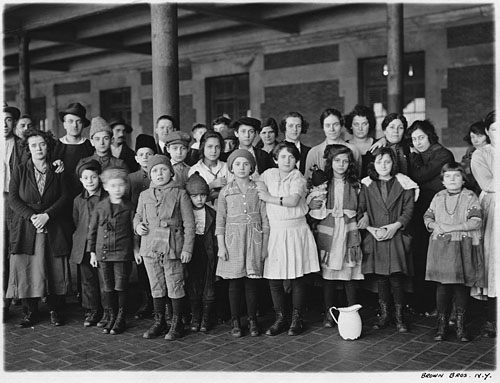Americans of the ‘20s Chose Wisely . . . Can We?
Published on October 20th, 2014
In 1920, many Americans were convinced that the mass immigration of previous decades had to halt. That year, the foreign-born population reached 13.9 million, the highest numerical total ever. The percentage of the foreign-born, out of a total population of 106 million, was 13 percent – very near to the highest percentage ever.
 A common sentiment among immigration restrictionists of that era was that mass immigration was harmful to American workers by driving down their wages and leaving them in poverty. A leader in the struggle for a moderate and sensible immigration policy was Samuel Gompers, leader of the American Federation of Labor (AFL). He stated, “Those who favor unrestricted immigration care nothing for the people. They are simply desirous of flooding the country with unskilled as well as skilled labor of other lands for the purpose of breaking down American standards.”
A common sentiment among immigration restrictionists of that era was that mass immigration was harmful to American workers by driving down their wages and leaving them in poverty. A leader in the struggle for a moderate and sensible immigration policy was Samuel Gompers, leader of the American Federation of Labor (AFL). He stated, “Those who favor unrestricted immigration care nothing for the people. They are simply desirous of flooding the country with unskilled as well as skilled labor of other lands for the purpose of breaking down American standards.”
In 1924, Congress acted to restrict immigration. The consequences during the next four decades were a rising standard of living which brought a high percentage of workers, including immigrants and their children, into the middle class. Accompanying this rise was the cultural assimilation of immigrants into mainstream American culture.
But in 1965, mass immigration began again, and today we face conditions similar to those of 1920. Then as now, the foreign-born population is at 13 percent, and the numerical total, 41.3 million, is the highest numerical total ever. As before, through our immigration policy, we are importing foreigners who are more likely than natives to be under the poverty level. They in turn depress the wages of working-class Americans. Middle-class Americans also face job competition from foreign workers on “temporary” H-1B visas who often end up staying permanently.
Today, entry into the middle class is becoming difficult, and remaining there is becoming difficult as well. The middle class is indeed shrinking. Mass immigration is not the only reason, but it does play a significant role.
The question now arises: Will the American people facing similar circumstances react as they did in the 1920s? Though the conditions are indeed similar, today the problems posed by immigration are greater simply because of the magnitude of the numbers.
In 1920, our country wasn’t much more than a generation removed from the frontier era, a time of wide open spaces in need of settlement, and a population only one-third of our current total of 317 million. Today the frontier is long-gone and we have a developed country, and in many places a crowded country. Stress on resources is growing. As one illustration, the current drought in California, a state with a population of 38 million, threatens far more of a calamity than a similar dry spell would have in 1920, when there were only 3.5 million Californians. Nevertheless, we persist with a level of immigration which Congress 90 years ago decided was excessive.
And even though the foreign-born percentage today is no greater than it was in 1920, the sheer numbers of immigrants today – three times the total of that time – are more problematic. These numbers make assimilation more difficult by increasing the size and cohesion of immigrant communities.
The Americans of the 1920s made the right choice, and reaped beneficial results. We today have their example. What we need is the will to do likewise.




